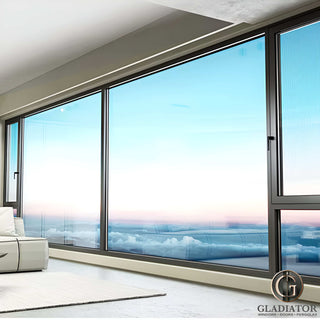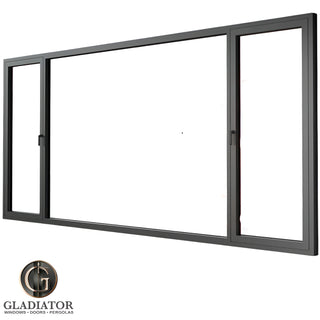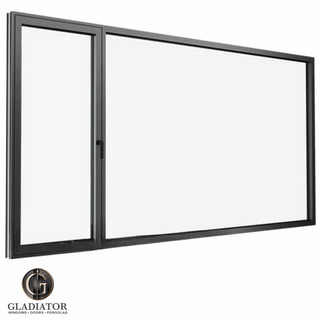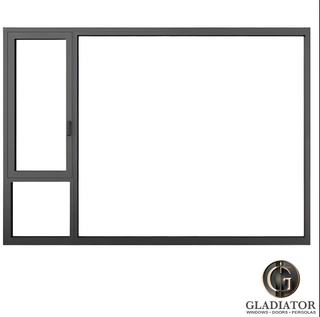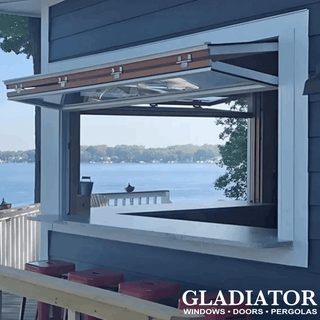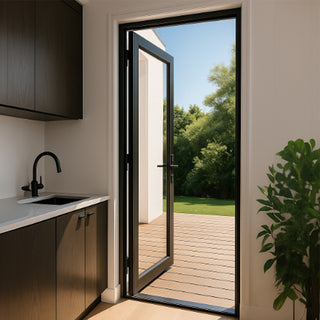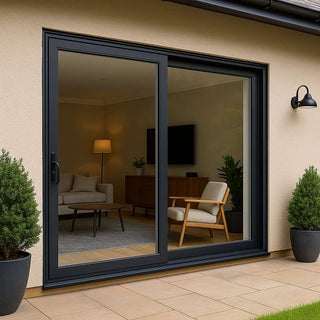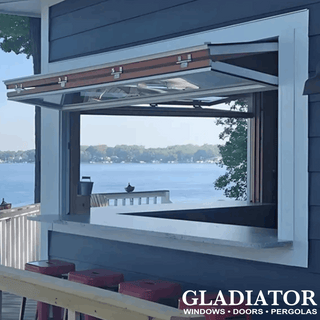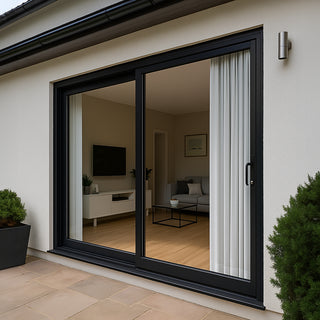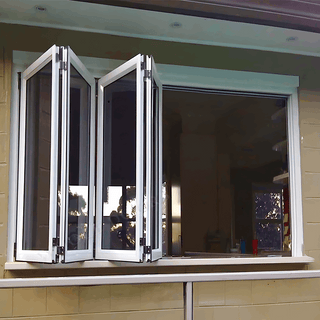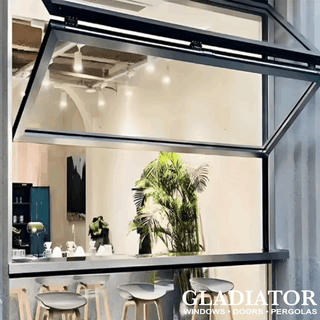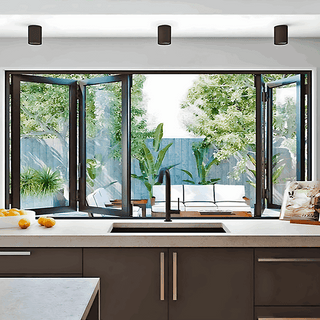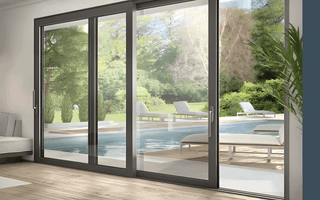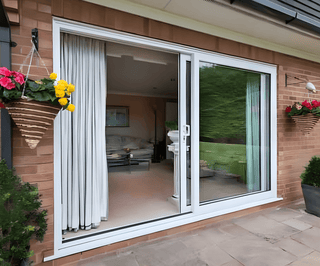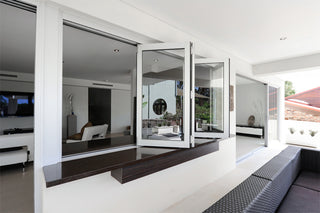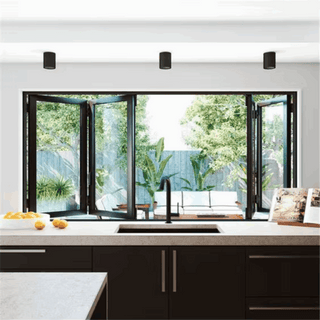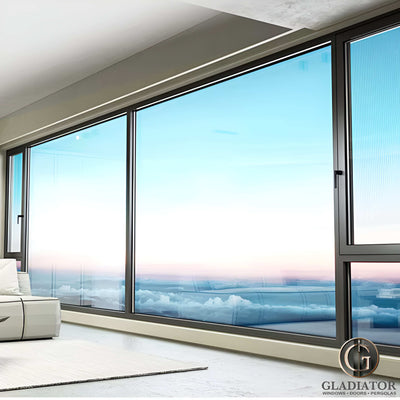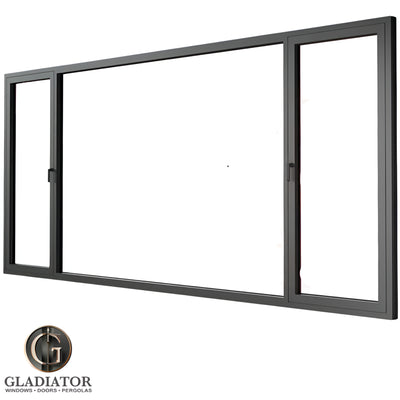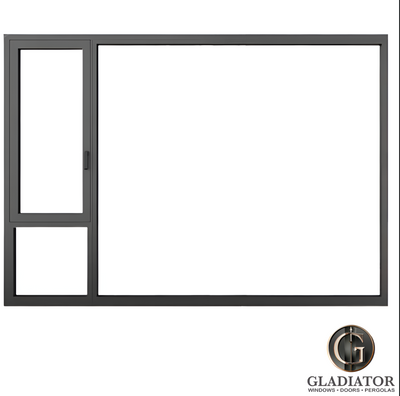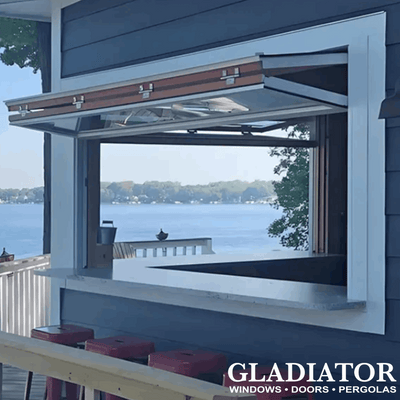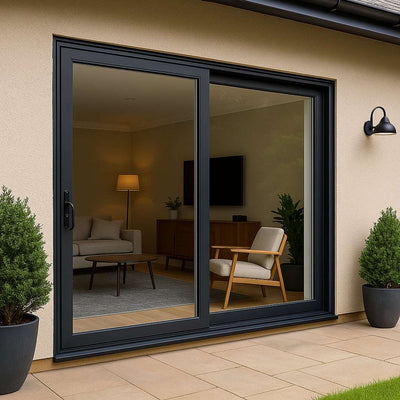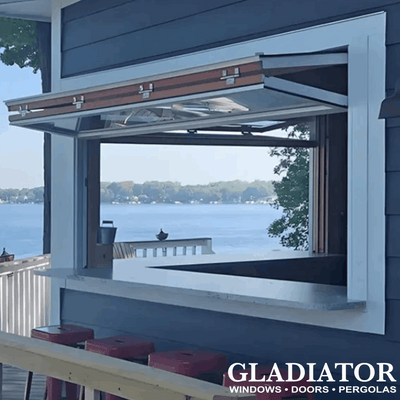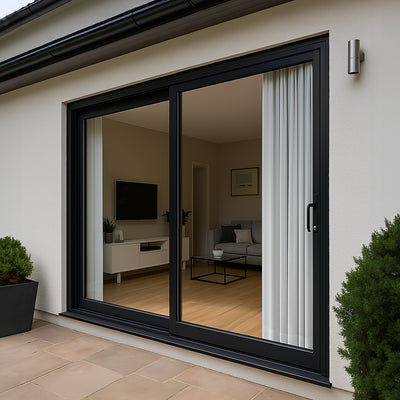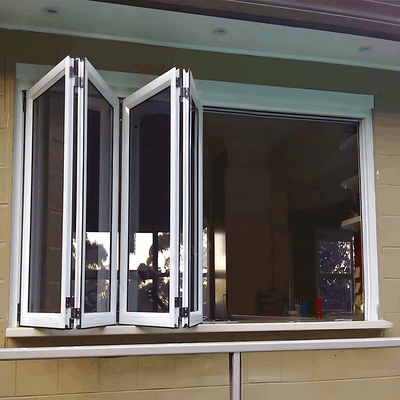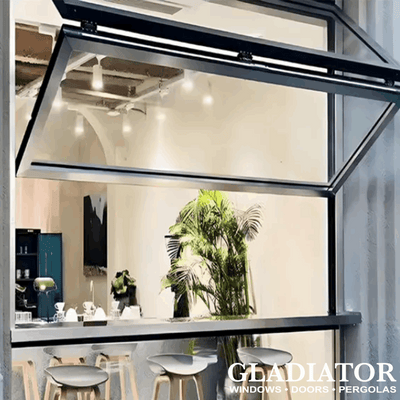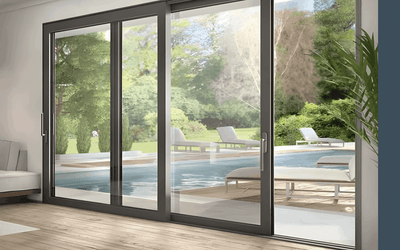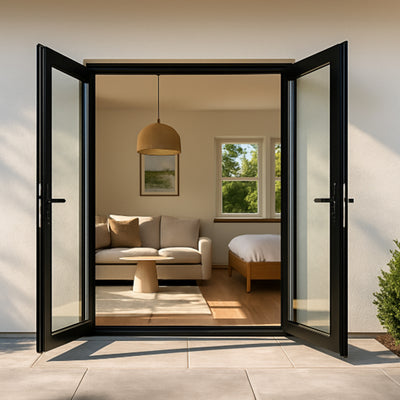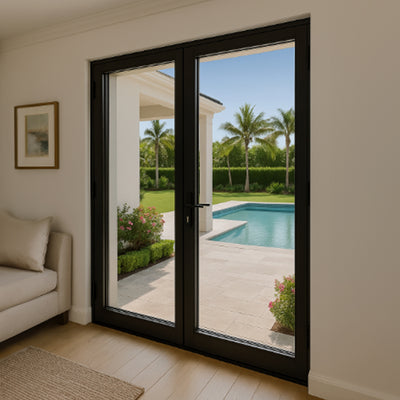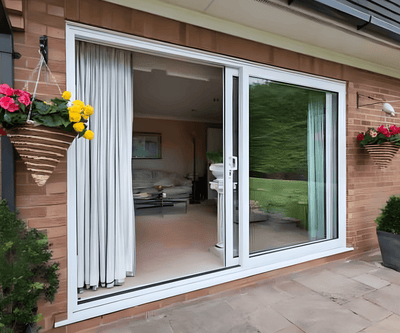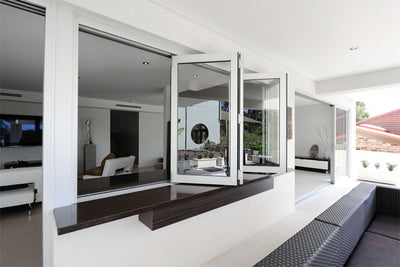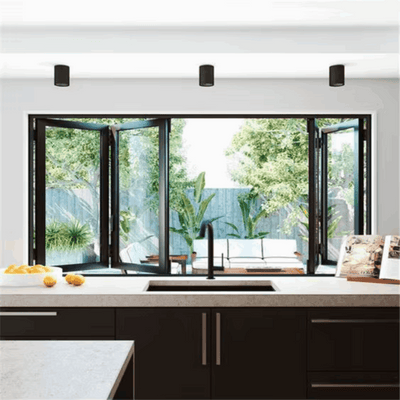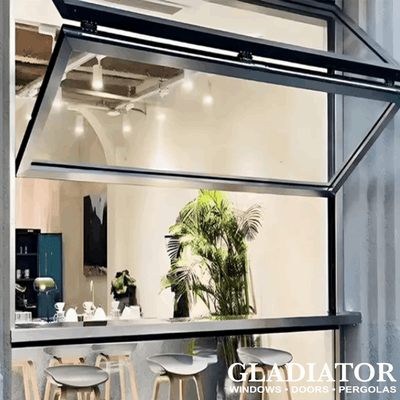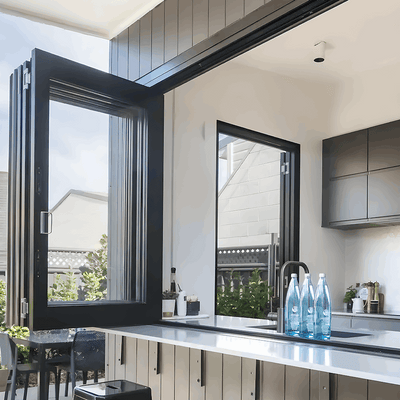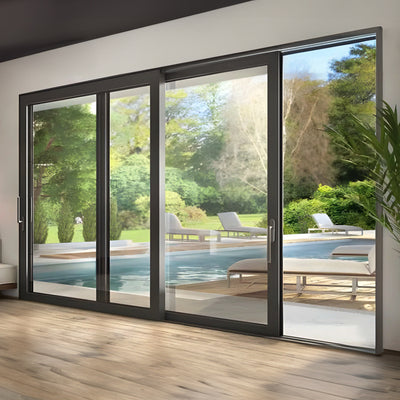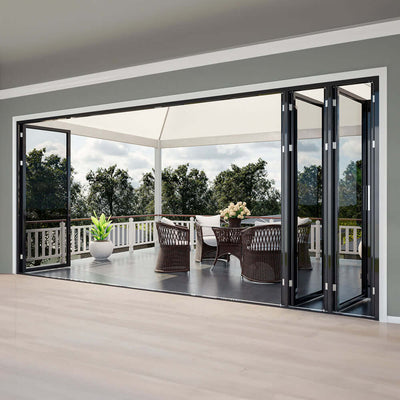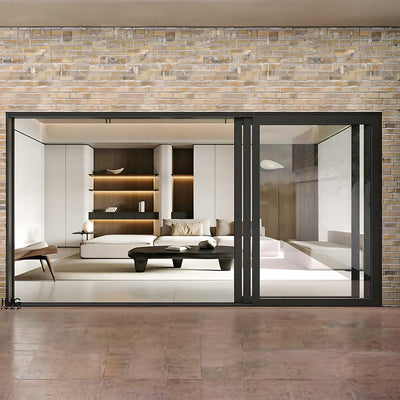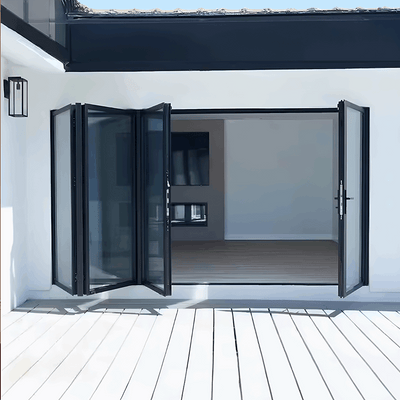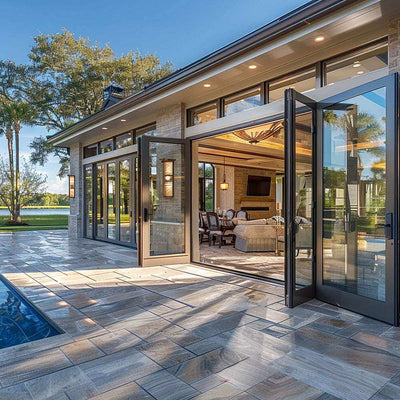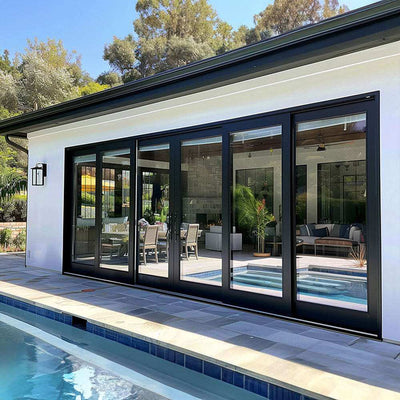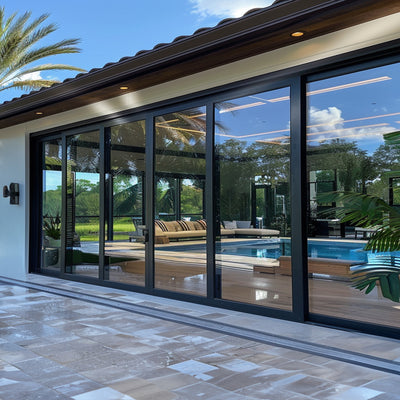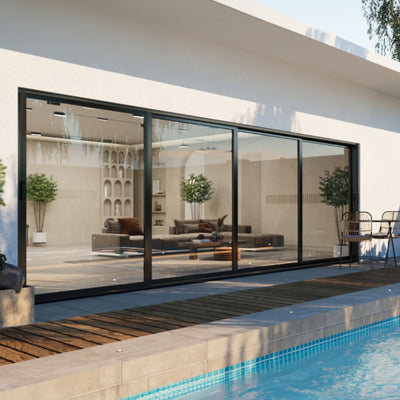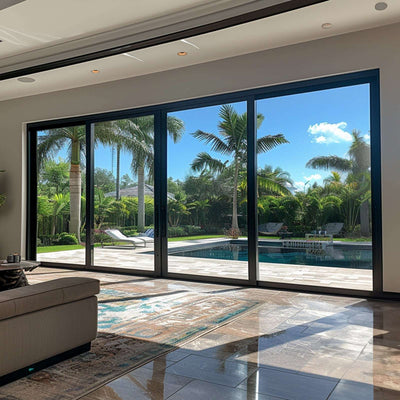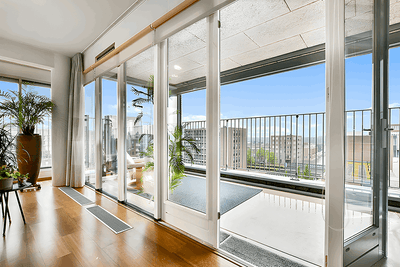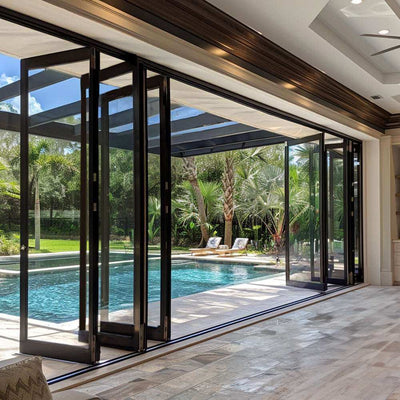Why Your Sliding Glass Door Is Fighting Back
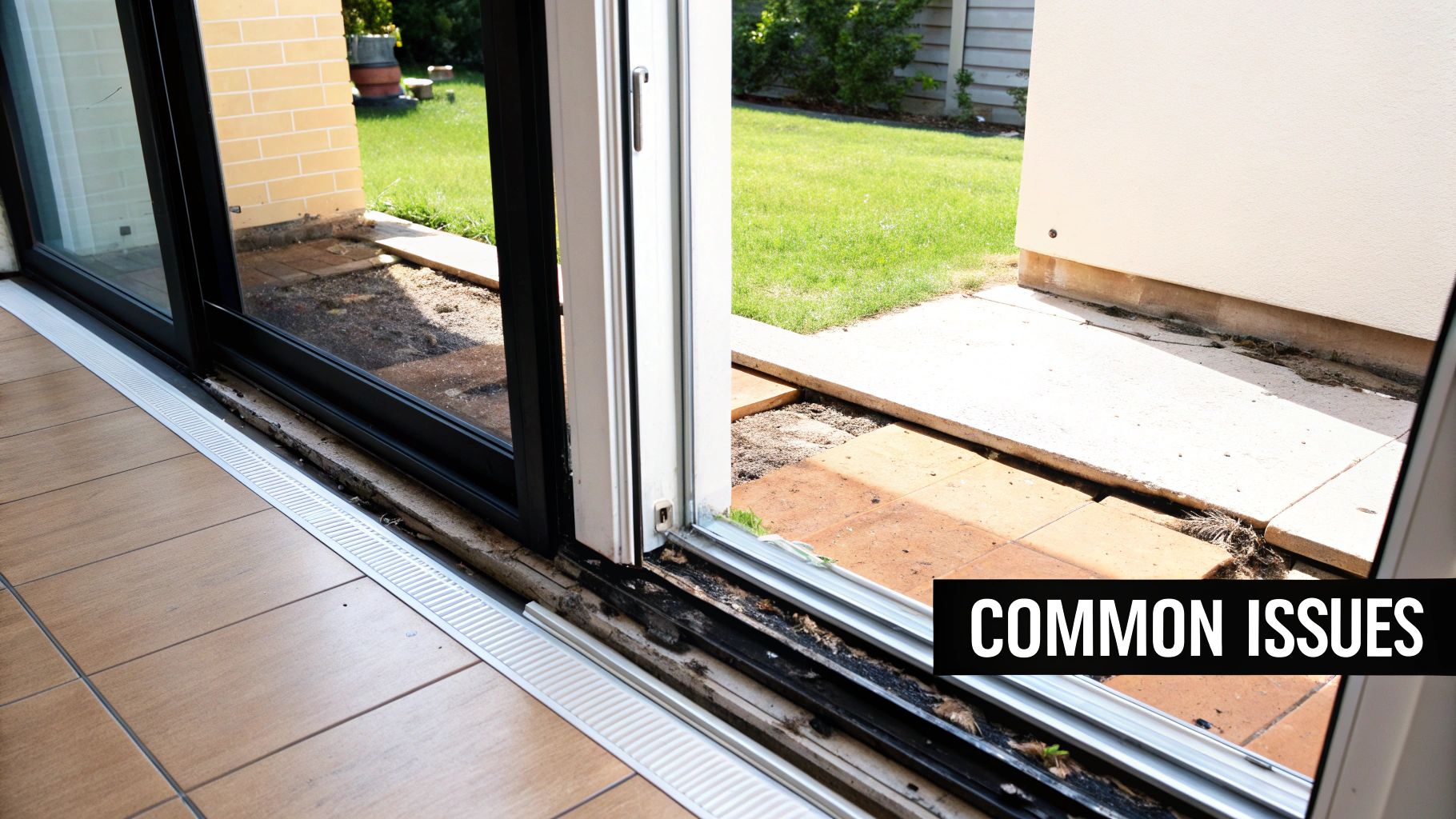
That all-too-familiar struggle with a stubborn sliding glass door is a common homeowner complaint. Why does a door that once glided effortlessly now feel like an immovable object? Understanding the reasons behind this common issue can save you time, frustration, and money. Let's explore some of the typical culprits.
Common Culprits Behind Sliding Door Troubles
The track is often the primary offender. Over time, dirt, grime, and debris accumulate, creating friction and hindering the door's smooth operation. Worn-out rollers also contribute significantly to the problem. These small wheels carry the door's weight, and with age, they can become flat, chipped, or even disintegrate. This added friction makes opening and closing the door a real chore.
Another common issue is misalignment. Years of use, settling of the house, or simple wear and tear can shift the door out of its proper position. This misalignment causes the door to rub against the frame, creating resistance and potentially damaging the frame. Even a slight shift can cause the door to catch, making it stick and difficult to slide.
The Impact of Everyday Use and Temperature
Temperature fluctuations surprisingly play a role in sliding door problems. In warmer weather, the door frame can expand, causing the door to fit tightly. Conversely, colder temperatures can cause the frame to contract, creating gaps and affecting the seal, which can lead to drafts and lower energy efficiency.
Furthermore, daily use contributes to wear and tear. High-traffic areas and frequent use put added stress on the door's components, accelerating the deterioration of rollers and tracks.
Sliding Glass Door Repair Costs
Sliding glass door repairs are an inevitable expense for many homeowners. Basic repairs, such as replacing rollers and cleaning tracks, typically cost between $130 and $157 per door. However, costs can vary based on location and the complexity of the repair. More extensive repairs, like glass replacement, can range from $250 to $1,000. Find more detailed statistics here Given this range, getting several detailed quotes from qualified professionals is essential.
Identifying Warning Signs Early
Recognizing early warning signs is key to preventing major problems. A sticky door, scraping sound, or difficulty latching all indicate a potential issue. Addressing these problems promptly can prevent more costly repairs in the future. This proactive approach not only saves money but also extends the lifespan of your sliding glass door. So, the next time your sliding door puts up a fight, remember these common culprits and take action before a small annoyance becomes a major headache.
Track Revival: Transforming Stuck to Smooth

Smooth operation of your sliding glass door depends significantly on its track. This often-overlooked component is key for effortless gliding. Let's explore how professional sliding glass door repair technicians restore these tracks and how you can achieve the same results at home.
The Power of Proper Cleaning
Effective cleaning can significantly improve sliding glass door functionality. A stiff brush, such as an old toothbrush or a wire brush, works wonders for removing grime from the track's crevices. A simple solution of warm water and mild dish soap can cut through built-up dirt.
Avoid using abrasive cleaners or harsh chemicals. These can corrode the track, especially aluminum tracks, leading to future problems. Gentle cleaning is always the best approach.
Material Matters: Tailoring Your Approach
Different track materials require specific cleaning methods. Aluminum tracks, common in many homes, are easily scratched, so gentle cleaning is crucial. Vinyl tracks are more resistant to scratches, but harsh chemicals can cause discoloration. Older homes might have wooden tracks that demand even more delicate care.
Knowing your track material helps determine the best cleaning approach. This ensures effective cleaning without causing damage. Proper cleaning sets the stage for smooth gliding.
Lubrication: The Secret to Smooth Gliding
After cleaning and thoroughly drying the track, lubrication is essential. A silicone-based lubricant is recommended, as it doesn't attract dirt and dust. Apply a thin layer, avoiding over-lubrication, which can hinder movement and attract debris.
This simple step can dramatically improve the door's performance. Proper lubrication ensures smooth, effortless gliding.
Preventative Maintenance: A Small Investment, Big Returns
Regular maintenance prevents major sliding glass door repair issues. By cleaning and lubricating the tracks every few months, you can extend the door's lifespan and avoid costly repairs.
For optimal performance, consider the following maintenance schedule:
- Monthly: Remove visible debris from the track.
- Quarterly: Clean the track with soap and water, followed by lubrication.
- Annually: Inspect rollers for wear and tear and lubricate all moving parts.
Tools and Products for Success
Having the right tools makes maintenance easier. The following table lists the essential items for DIY sliding glass door track maintenance:
Track Maintenance Tools & Products: Essential tools and products for DIY sliding glass door track maintenance
| Item | Purpose | Recommended Type | Usage Frequency |
|---|---|---|---|
| Stiff Brush | Removing dirt and debris | Old toothbrush, wire brush | Monthly/Quarterly |
| Vacuum Cleaner | Removing loose debris | Crevice attachment | Monthly |
| Mild Dish Soap | Cleaning the track | Non-abrasive formula | Quarterly |
| Silicone Spray | Lubricating the track | Non-staining | Quarterly |
| Screwdriver | Tightening loose screws (if necessary) | Appropriate size for screws | As needed |
This table provides a quick reference for the tools and products needed for effective track maintenance. Regular use of these items will keep your sliding door operating smoothly.
By following these tips and establishing a consistent maintenance routine, you can ensure your sliding glass door continues to glide smoothly for years, saving you time, money, and frustration.
Roller Rescue: When Your Door Needs New Wheels
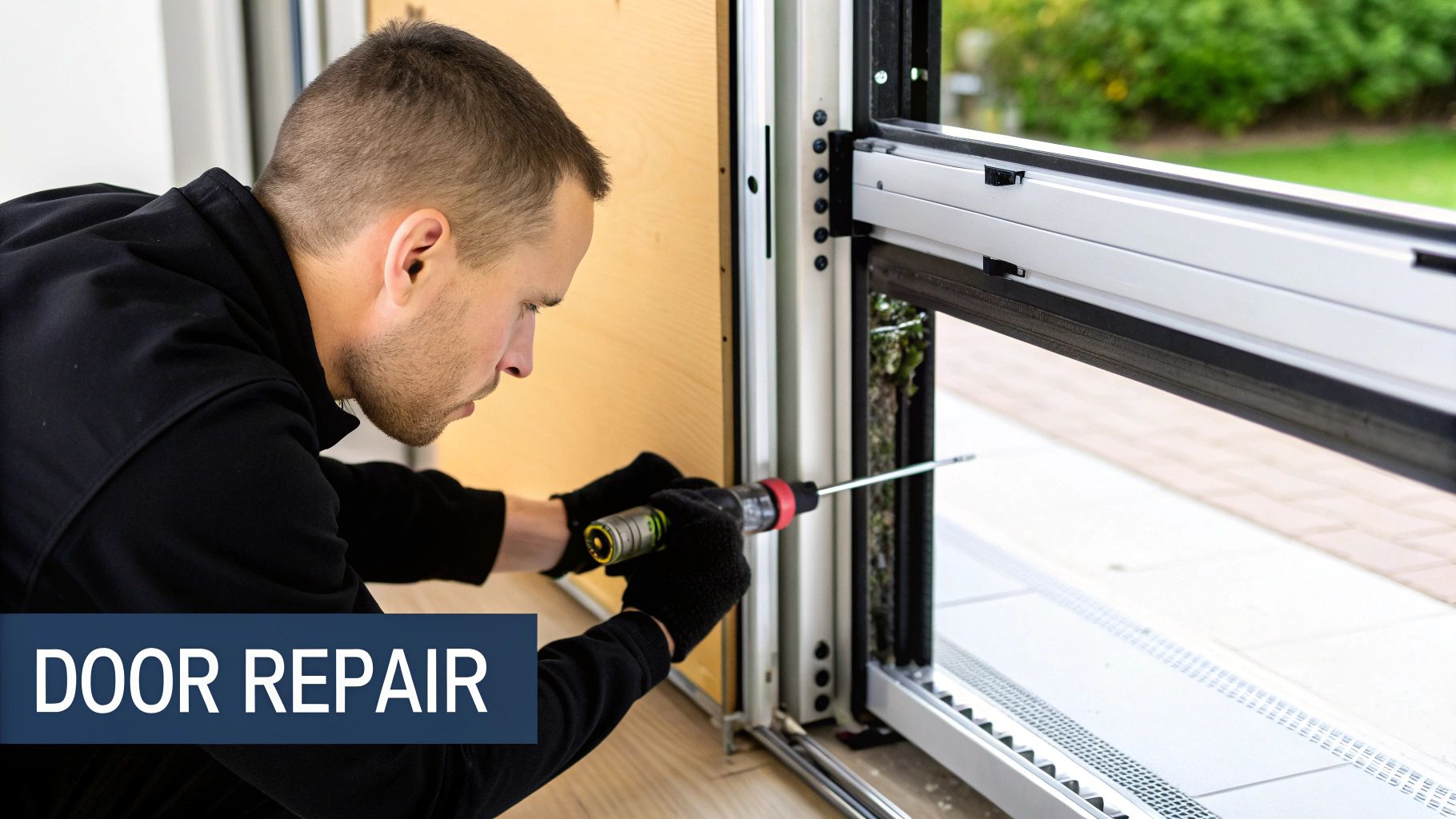
When your sliding glass door feels heavy and difficult to move, the problem often lies with the rollers. This guide will walk you through the process of replacing these essential components, a repair that can save you hundreds of dollars compared to hiring a professional. You might be interested in: How to master...
Removing the Door: A Safe and Simple Approach
The first step is safely removing the sliding door. While this might seem intimidating, it’s generally a straightforward process. Start by lifting the door upwards to disengage it from the track.
Once lifted, carefully pull the bottom of the door towards you, tilting it out of the frame. Because sliding glass doors can be heavy and awkward, it's highly recommended to have someone assist you with this step.
Accessing the Roller Assembly: Finding the Hidden Wheels
With the door removed, you'll have access to the roller assembly, typically located at the bottom of the door. These assemblies often have a cover that needs to be removed, usually by sliding or unscrewing it.
Once the cover is off, you'll see the rollers, which are usually attached with screws or clips. Remember to keep track of all screws and small parts during disassembly.
Choosing the Right Replacement Rollers: A Perfect Match
Choosing the right replacement rollers is crucial for smooth door operation. The simplest way to ensure a perfect match is to remove one of the old rollers and take it to your local hardware store.
Important factors to consider are the roller diameter, width, and the attachment method. Using the old roller as a template guarantees you'll purchase the correct replacements.
Reinstallation: Putting It All Back Together
With the new rollers in hand, reinstallation is essentially the reverse of the removal process. Securely attach the new rollers to the assembly, replace the cover, and carefully guide the door back into the track.
Make sure the rollers engage correctly with the track before fully seating the door. Test the door’s movement to confirm it glides smoothly and effortlessly.
Hardware Matters: Handles, Latches, and Locks
While rollers are critical for smooth operation, other hardware components are equally important. Handles, latches, and locks contribute to both functionality and security. The repair process provides a perfect opportunity to inspect these components for wear and tear.
- Handles: Check for looseness or damage. Tighten any loose screws or replace the handle as needed.
- Latches: Ensure the latch engages securely with the strike plate. Adjust the strike plate or replace the latch if necessary.
- Locks: Verify the lock operates correctly. Lubricate the locking mechanism or replace the lock if it’s sticking or not working properly.
Addressing these smaller parts can greatly improve your sliding glass door's performance and security.
Preventing Future Problems: Proactive Maintenance
Along with regular track cleaning, maintaining your rollers is essential for preventing future problems. Keeping the rollers clean and lubricated will significantly extend their lifespan.
This proactive approach will save you money and the frustration of a malfunctioning door. By following these steps, you can confidently tackle roller replacement and keep your sliding glass door operating smoothly for years.
The Glass Dilemma: Repair, Replace, or Reinforce?
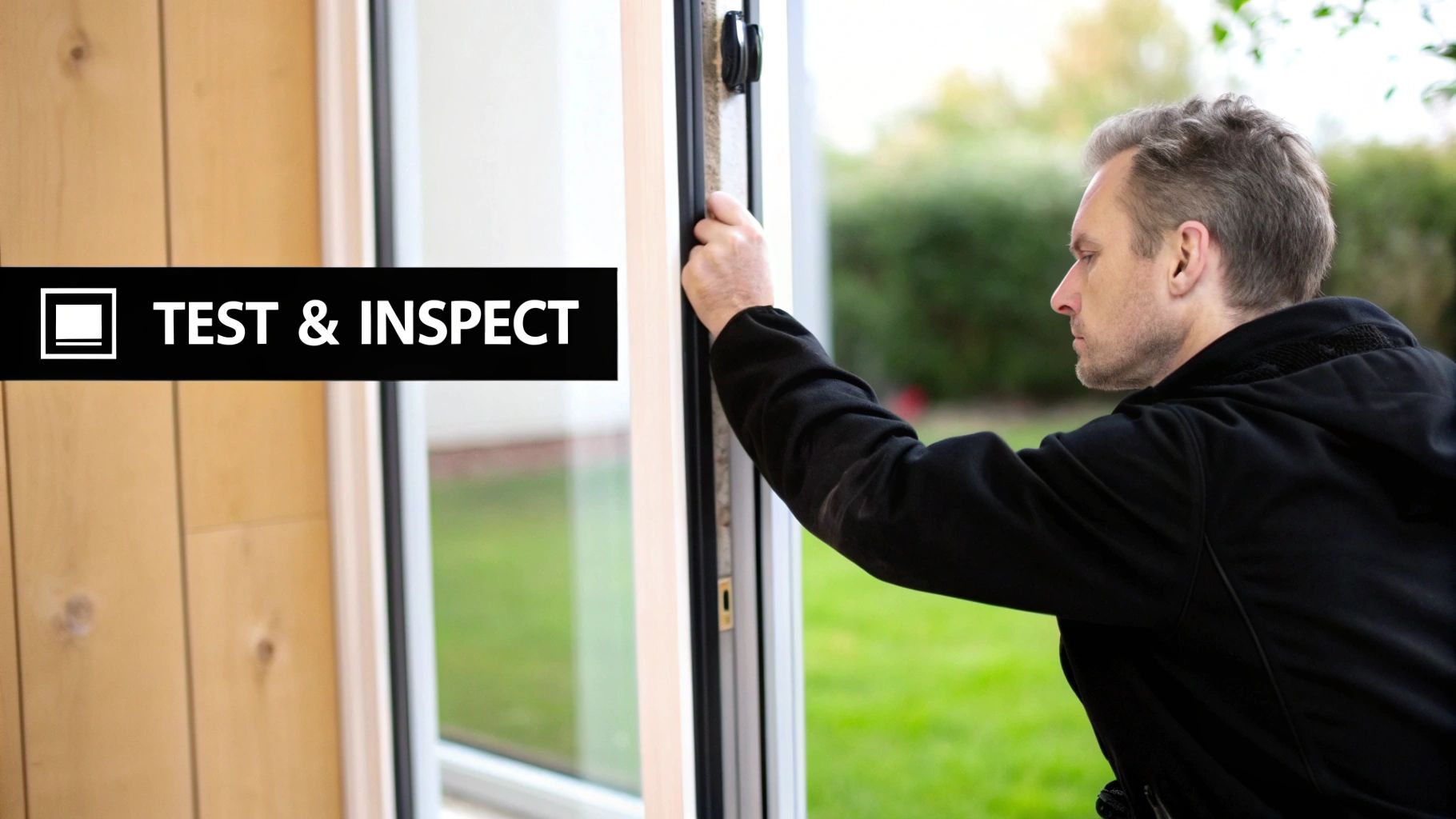
Damaged glass in your sliding glass door isn't just an eyesore; it's a genuine safety and energy efficiency concern. This guide provides a practical framework to help you decide whether to repair, replace, or reinforce your sliding glass door's glass.
Assessing the Damage: A Critical First Step
The first step is assessing the damage. Small chips or cracks might be easily repairable, while larger breaks or shattered panes will likely need a full replacement. The type of glass also matters. Tempered glass, known for its safety features, can't be repaired and must be replaced if damaged.
This initial assessment helps narrow down the best course of action.
Repairing Minor Damage: A Cost-Effective Solution
Minor chips or cracks can often be repaired with a specialized glass repair resin. This resin fills the damaged area, restoring the glass's structural integrity and preventing further spreading. A small chip from a stray rock, for example, can be repaired, saving you the cost of a full replacement.
Keep in mind, repaired glass might not be as strong as the original, and the repair could be visible. Consider both aesthetics and long-term durability.
Replacing Damaged Glass: When Necessary
For extensive damage, replacing the glass pane is necessary. This involves removing the damaged panel and installing a new one. While pricier than repair, replacement ensures the door's structural integrity and safety. It also provides an opportunity to upgrade to energy-efficient glass options.
This raises the question: should you replace just the glass, or the entire door? This often depends on the door's overall condition and age. Simple issues like faulty rollers are easily repaired, while more serious problems, like a damaged frame, might require full replacement. Learn more about sliding glass door repair and replacement here. Older, single-pane doors can significantly impact energy bills. Upgrading to modern, energy-efficient doors can offer a return on investment of up to 65%.
Reinforcing Your Glass: Adding an Extra Layer of Protection
Reinforcing the existing glass with security film can be a good option. This strengthens the glass and makes it more resistant to breakage. This is a good choice for homes in high-risk areas or for added security.
Reinforcement doesn't address existing damage, but it can prevent future problems. This proactive approach offers added peace of mind.
To help you determine the best approach, we've compiled a helpful decision matrix:
Repair vs. Replacement Decision Matrix
Comparison guide to help decide between repairing or replacing sliding glass doors
| Issue Type | Repair Option | Replacement Option | Cost Comparison | Recommended Approach |
|---|---|---|---|---|
| Small chip or crack | Glass repair resin | Full glass pane replacement | Repair significantly cheaper | Repair |
| Large crack or shattered pane | Not applicable | Full glass pane replacement | Replacement necessary | Replace |
| Damaged frame | Frame repair (if possible) | Full door replacement | Depends on extent of damage | Varies, consult a professional |
| Foggy or damaged seals in insulated glass | Not applicable | Full glass pane or full door replacement | Replacement necessary | Replace |
| Faulty rollers | Roller replacement | Not applicable | Repair significantly cheaper | Repair |
| Desire for increased energy efficiency | Not applicable | Full door replacement with energy-efficient glass | Higher upfront cost, long-term savings | Replace |
| Increased security concerns | Security film application | Full door replacement with impact-resistant glass | Film application cheaper, but glass replacement offers more comprehensive protection | Depends on individual needs |
This table summarizes the various factors influencing your decision. Cost is a key consideration, but so are safety and long-term performance.
Choosing the Right Glass Type: Navigating the Options
When replacing glass, consider these options:
- Tempered Glass: Known for strength and safety, shattering into small, relatively harmless pieces upon impact.
- Laminated Glass: Consisting of two or more layers of glass bonded together, holding the glass together even when broken.
- Insulated Glass: Designed for energy efficiency, featuring two or more panes separated by a sealed air space.
Choosing the right type depends on your priorities. Laminated glass offers excellent soundproofing and UV protection, while insulated glass maximizes energy savings. Consult with a glass supplier or window and door expert for personalized guidance.
Seal the Deal: Weather-Proofing That Actually Works
That draft creeping in around your sliding glass door isn't just annoying; it's a drain on your energy budget. This section provides practical steps you can take to bolster your sliding glass door's performance and save money. We'll pinpoint common leak areas and show you how to seal them effectively.
Identifying Air Leaks: Where Does the Problem Lie?
Sliding glass doors frequently leak around the frame, the track, and where the two doors meet. Older doors, especially those with worn weatherstripping, are particularly vulnerable. A noticeable draft is a clear sign, but you can also use a lit incense stick held near these areas. Flickering or drawn smoke indicates a leak.
Weatherstripping: Your First Line of Defense
Weatherstripping is crucial for a well-sealed sliding glass door. Options include foam tape, vinyl, and felt. The right choice depends on your door's specific needs and condition. Foam tape offers a simple DIY fix for small gaps, while vinyl provides a longer-lasting seal. For a complete overview of weatherstripping choices, see our guide on How to master...
Make sure the weatherstripping fits snugly to block air and moisture effectively. This straightforward and affordable step can significantly reduce energy loss.
Beyond Weatherstripping: Supplemental Solutions
Even with new weatherstripping, extra measures can further improve your door's performance. Door sweeps at the bottom of the door seal the gap against the threshold. Thermal curtains add insulation, minimizing heat transfer year-round.
These additions provide a significant boost in energy efficiency for a small investment.
Measuring Your Success: Quantifying the Improvement
After making these changes, evaluate the results. One simple method is to track your energy bills. A noticeable reduction confirms improved efficiency. You can also retest with the incense stick to confirm the leaks are gone.
Checking for remaining weak points allows for fine-tuning and optimization. This iterative process ensures maximum energy savings and comfort.
Addressing the Frame and Track: A Deeper Dive
If leaks persist even with new weatherstripping, the frame itself may be the issue. Caulk can seal gaps and cracks in the frame. Replacing damaged tracks can also significantly improve the door's seal.
These more complex steps may require professional help, but they substantially enhance the door's long-term performance and energy efficiency. Addressing these details takes care of both current and future problems. By taking these steps, you can turn a drafty sliding glass door into a well-sealed, energy-efficient entryway to your outdoor space.
When to Call the Pros: Getting What You Pay For
So far, we've covered a lot of DIY fixes for sliding glass doors. But sometimes, you need a professional. Knowing when to call an expert is important for your budget and your sanity. This means understanding repair costs and how to evaluate quotes.
Decoding Sliding Glass Door Repair Costs
Several things affect the final cost of professional repairs. The type of repair is a big one. Simple jobs like replacing rollers are much cheaper than complex ones like replacing glass or fixing the frame. The door’s size and type also matter. Larger, custom doors will likely cost more to fix. Finally, the company’s pricing plays a role. Some companies have flat rates, others charge hourly.
Replacing a standard roller might cost between $75 and $150 per roller. Replacing a broken glass panel could cost anywhere from $300 to over $1,000. Remember, these are estimates, and actual prices will differ. Sliding glass doors have become a popular feature in modern homes, blending style and function. Installing a new sliding glass door typically costs between $1,169 and $4,265, with the average homeowner spending about $2,639. Learn more about sliding door costs. This upgrade can boost your home’s curb appeal and create a smooth transition between indoors and out.
Evaluating Quotes: Separating the Pros From the Amateurs
When comparing quotes, don't just look at the total price. Check for detailed explanations of the work, including materials and labor costs. A vague quote could mean hidden fees or subpar work. Ask about the contractor’s experience with sliding glass door repair. Verify their licenses and insurance. You might also be interested in: Our Products
-
Ask Specific Questions: What materials do they use? What are their warranty policies? Reputable companies stand behind their work with warranties on parts and labor.
-
Look Beyond Price: While cost is important, the cheapest quote isn't always the best. A slightly higher price from a reputable contractor with great reviews might be a better investment.
Negotiating: Getting the Best Value
Negotiating doesn't have to be a fight. Clearly communicate your budget and priorities. See if the contractor can offer options or adjustments to meet your needs. For example, maybe they can use a more budget-friendly material without sacrificing quality.
- Be Prepared to Walk Away: If a contractor won’t address your concerns or answer your questions, that’s a red flag. A good professional will be transparent and willing to work with you.
Warranties: Protecting Your Investment
A solid warranty shows quality. Ask about the length and coverage of the warranty. A good warranty should cover both parts and labor for a reasonable time.
Understanding these aspects of sliding glass door repair helps you make smart choices and get the most for your money.
Ready to upgrade your windows and doors? Gladiator Window and Doors specializes in high-quality, custom sliding doors, pivot doors, bi-fold doors, panoramic doors, and folding windows. We also offer fully loaded pergolas with all the latest features. As industry leaders, we offer the lowest prices in the USA, backed by our Best Offer Guarantee. Get massive doors at a fraction of the cost with our top-tier craftsmanship and the best warranty in the industry. Visit us today for unbeatable value!
Article created using Outrank

















